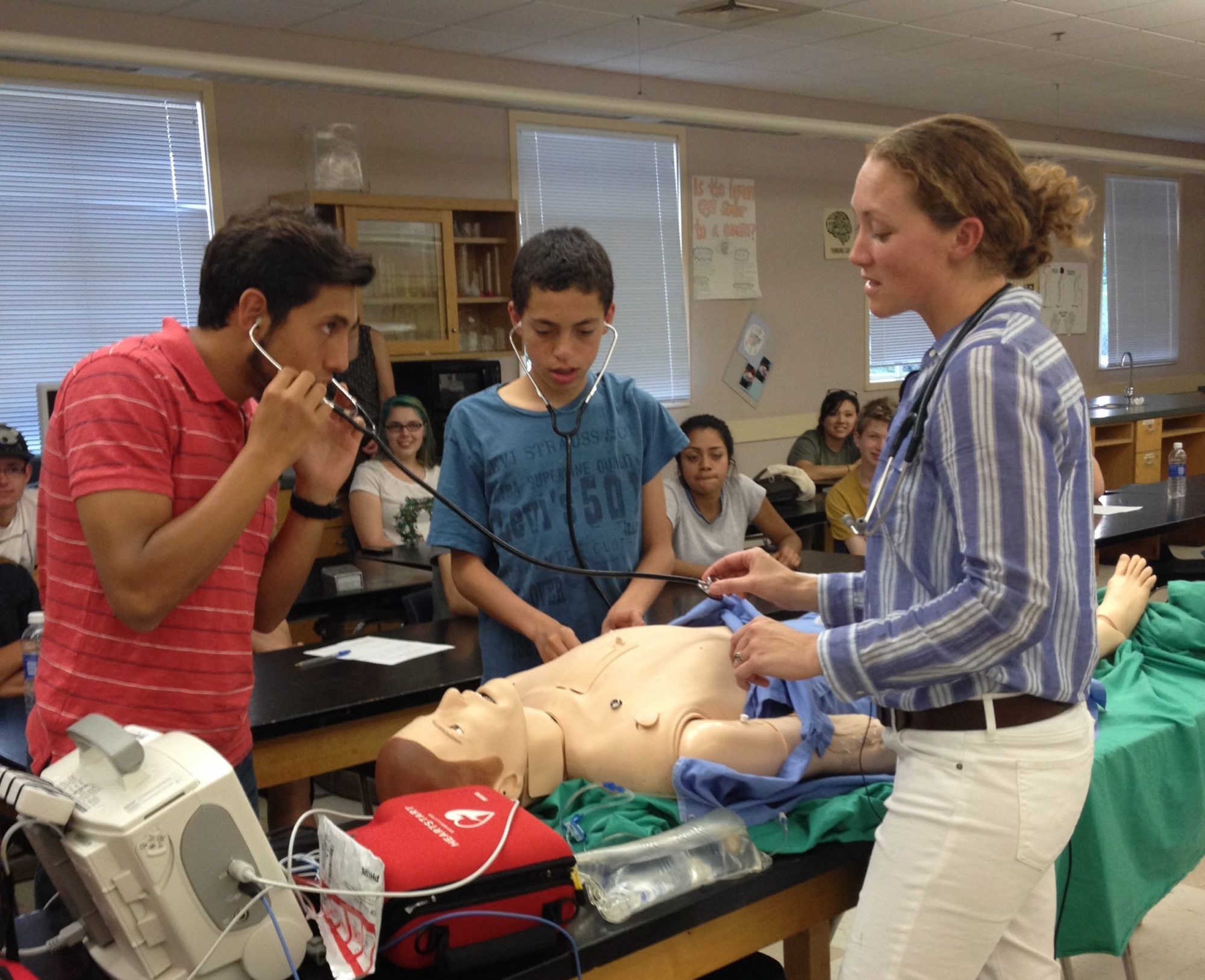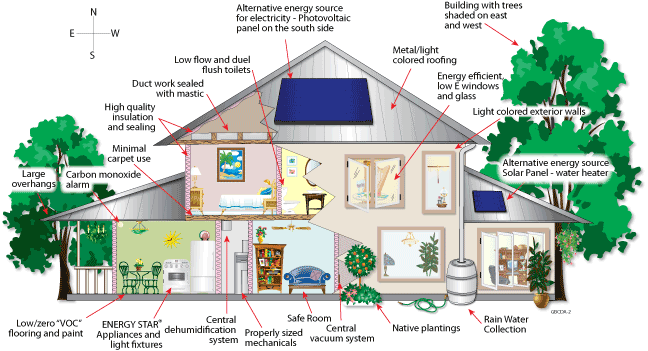A sustainable-energy house.
Climate change has integrated itself into our daily actions. It’s in the green recycle bins, marked with the immediately recognizable triangular arrow symbol, the paper versus plastic, the electric cars humming down the road and the grass-fed cows. Becoming environmentally-conscious has affected many communities, some more than others.
It’s still not enough. Ice caps are still making the news as they melt into the ocean, and this summer’s record-breaking temperatures have cast an ominous shadow onto the future. People are largely aware of this, but oftentimes brush the frantic cries of environmental scientists off. To many, global warming has faded into the background, a part of the ever-changing scenery and a doom so large and so distant there’s no point in actively searching for ways to slow it. ‘Going green’ is too unwieldy, too time-consuming, too costly or too much effort.
However, global warming cannot be dismissed so easily. Ice caps seem to constantly make the headlines because they are crucial to the state of our world, down to the very particles of air bouncing off the walls of our homes. Cyane Dandridge, founder of Strategic Energy Innovations (SEI), painted a gruesome picture of what Earth could look like if current climate trends continued in the next couple decades. A sweltering drought would suck the world of water, and the USA by three million dollars. Freshwater fish would begin dying out, and wildfires would ramp up in frequency. Sea levels rise from one to two feet, submerging familiar coastline cities. In her powerpoint presentation, Ms. Dandridge pointed out a couple sections of Marin that were projected to be underwater.
So global warming affects us in our lifetime, and holds serious consequences. Studies that connect human activity and industry with the increased amount of greenhouse gases in the air brush away feeble suggestions that perhaps Earth’s overheating was natural. There is no forgetting the Industrial Revolution of the past to the oil-fueled commuters today. The question then becomes: beyond recycling, what else can we do to prevent disastrous climate change?
Ms. Dandridge and her company, Strategic Energy Innovations, offers one solution: energy-efficient housing. Solar panels are certainly one of the better-known aspects of green housing, but make no mistake—green housing comes in many forms at many levels.
Light bulbs are one of the easiest energy-wasters to rectify. The round, bulbous light bulbs with the yellowish glow bleed energy. Much more efficient, the coiled white lights use less energy to produce brighter light.
An eco-friendly light bulb.
Another aspect of housing are appliances. Leaving appliances plugged in, even when they aren’t in use, still uses a certain amount of watts. Unplugging appliances, and certainly turning heaters and such off before leaving are crucial. In fact, heaters and coolers could be replaced with thick blankets, jackets, or the absence thereof. Why waste watts when body heat can be circulated to our benefit instead?
Don’t dismiss solar panels yet, either. Solar panels make use of an ever-present energy source: sunshine. They are a bit costly, but not for the reason most people think. Oil and gas companies are given so many government subsidies that they enter the market at artificially cheap prices. Gas might be cheap in the short run, but in the long run, fossil fuels not only harm the environment but are bound to run out, getting more and more expensive and supplies draw short and subsidizers grow frantic.
Outside of the house, the infrastructure of a community can be laid out to expend energy efficiently. Placing groceries and stores in close proximity to the freeway, and offices close by to homes, can shorten the commute that clogs highways and sends greenhouse gases into the air. More importance on bike trails, and their connection to workplaces, neighborhoods, and areas around the community can shift the commute onto cleaner, man-powered bicycles.
Speaking of commute, cars are a major cause of pollutants and greenhouse gases. New technology is cranking out hybrid and electric cars, every new model being more efficient and more affordable. Some examples are the Nissan Leaf and Teslas.
Also important in every person’s life is food. Consider buying local produce, which has the advantage of not coming millions of miles away on puffing cargo ships. Grass-fed beef is not just another organic oddity; corn-fed cows produce serious amounts of methane through their burps that contribute to the greenhouse gases.
Energy-efficient housing really extends to more than just the house. When Ms. Dandridge presented on alternatives, she essentially redesigned whole communities. Efficient housing can extend to communities, from food to transport to hot summers and cold winters. Much like how entire neighborhoods can be designed with the environment in mind, so must counties, states, countries and continents redesign their infrastructures.
—
This article was written using information from Cyane Dandrige’s presentation on “Building and Unbuilding a Climate Change Crisis,” on Wednesday, November 28. Ms. Dandridge is the founder of Strategic Energy Innovations and the director for the School of Environmental Leadership (MSEL).
—
Sandra Ning



